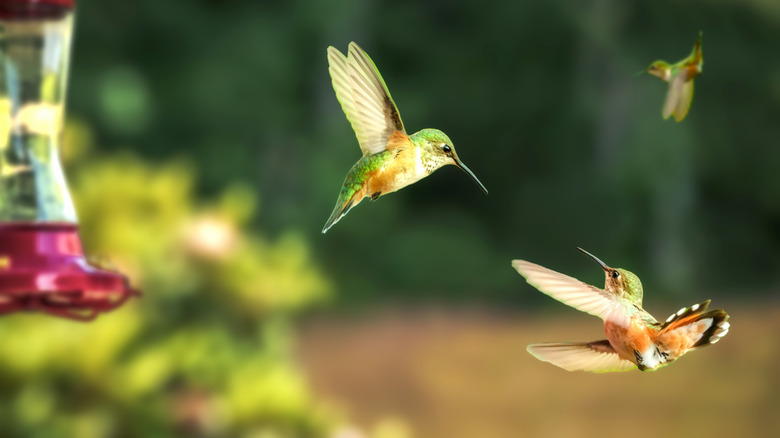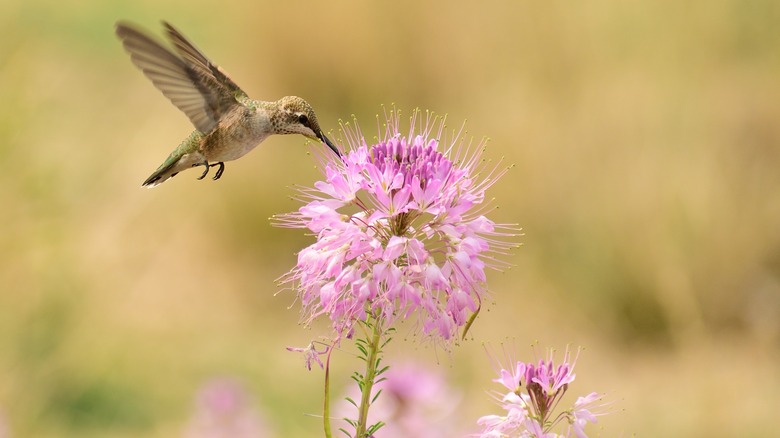The Blooming Tropical Native That'll Make Your Yard Irresistible To Hummingbirds
If watching hummingbirds flitting around your garden as they look for nectar-rich flowers to feed on is something you love to do, there's one tropical native flower that you'll want to grow because its blooms are simply irresistible to these delightful little birds. The spider flower (Cleome houtteana) will make a stunning addition to your flower garden with its spectacular spidery blooms in a variety of colors, including purple, white, and pink.
The spider flower is native to Argentina and Brazil and can be successfully grown in USDA hardiness zones 10 through 11. Cleome species can reach a height of up to 6 feet, but there are many cultivars and hybrids that have been bred to be more compact in growth. You'll also be pleased to know that these gorgeous plants will attract a range of other pollinators, including swallowtail butterflies. Cleomes will bloom from summer into the fall, after which they'll develop thin green seed pods. As the pods ripen, they'll split open and disperse the many small seeds around your garden. This means that once you have cleome growing in your garden, it will reseed, and you'll get more gorgeous flowers year after year. But if you're growing one of the newer hybrids, you might find that the seeds are sterile and won't germinate, while other cultivar seeds may not grow true to form. This is important to understand if you're in the habit of harvesting seeds from your garden and replanting them the following season. Here's how to grow and care for spider flowers in your nectar garden.
Growing tips and care requirements for spider flowers
The spider flower is a tender annual so it needs to be grown from seed each year. Choose a sunny spot in the garden with soil that is well-drained and sow the seeds once all danger of frost has passed. Alternatively, you can start the seeds indoors around six to eight weeks before the last frost date. You might even be able to find transplants in your local garden center or nursery to get a head start on the blooms.
These flowers do like a little moisture while they're growing and becoming established, but overwatering should be avoided because it can produce leggy growth. Adding some mulch on top of the soil will help conserve some moisture, but try to keep this away from the stems of the plants. Regular fertilizing is also recommended to help these plants to thrive. You can either use a slow-release balanced granular fertilizer or select a liquid feed suitable for flowering plants and apply this over the summer growth period. You'll also be happy to know that this plant is generally pest-free and is one of the best flowering plants for your garden that are deer-resistant. Now that you know that spider flowers are a favorite with hummingbirds, you'll want to find other tips and tricks to attract more hummingbirds to your garden, such as installing special feeders and providing the birds with fresh water.

